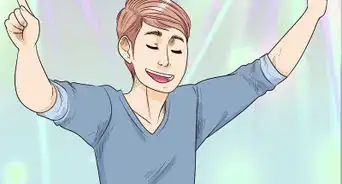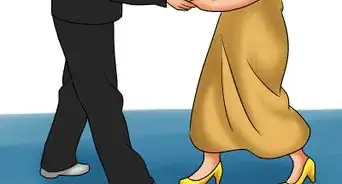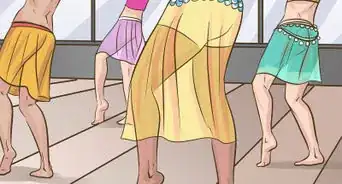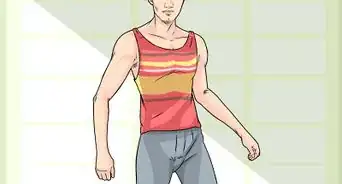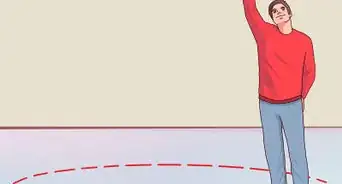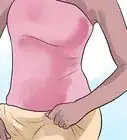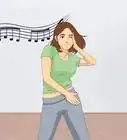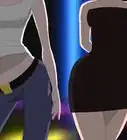This article was co-authored by Val Cunningham and by wikiHow staff writer, Amber Crain. Val Cunningham is a Choreographer, Lead Dance Instructor, and Certified Yoga Instructor at The Dance Loft, a dance studio based in San Francisco, California. Val has over 23 years of dance instruction, performance, and choreography experience and specializes in ballroom, Latin, and swing dancing. She is also trained in house, hip-hop, jazz, ballet, and modern dance, and has studied with world renouned dancers such as Tom Slaterand Richard Lambarty. She is ISTD (Imperial Society of Teachers of Dancing), ProDVIDA (Professional Dance Vision International Dance Association), and Zumba certified. She is a member of the National Dance Council of America.
There are 17 references cited in this article, which can be found at the bottom of the page.
wikiHow marks an article as reader-approved once it receives enough positive feedback. This article has 16 testimonials from our readers, earning it our reader-approved status.
This article has been viewed 612,653 times.
Choreographing a dance is a beautiful and creative experience. There are so many decisions to make, though, so the process can be a bit overwhelming if you've never done it before. Don't worry—we'll walk you through the basic process from start to finish. You'll be creating your own dance routine in no time!
Steps
Music
-
1Pick a song for your routine that inspires you. The music guides most of your choices, so pick a song first. You can choose any song that you want! Go with your new favorite jam, browse music streaming sites for inspiration, or ask your friends and family for recommendations.[1]
- If you’re having trouble choosing a song, think about what kind of dance moves you like the most. For example, if you love expressive, modern movements like popping and locking, a hip-hop song would be perfect.
- Try doing a Google search that includes some of your basic preferences and see what comes up. For example, search “mid-tempo beat-driven R&B songs."
-
2Play the song repeatedly until you fully absorb it. Listen to it every chance you get—on the bus, at home, on your daily jog, before bed, etc. As you listen, try to identify the emotions you’re feeling.[2] [3] Jot down your thoughts and ideas so you can refer to these early brainstorming sessions later.[4]
- Does the song tell a story? If so, try to describe the plot in your own words. It can also help to write down what you sense and feel while listening to the song.[5]
Advertisement -
3Choose a short section of the song for your routine. Most songs are 3 minutes or longer, which is way too long for a routine. Songs usually have sections that won’t work well for a dance routine–maybe there’s an awkward tempo shift, a repetitive instrumental section, or a rhythm change you aren’t crazy about. Eliminate what you don’t like until you have about 1 ½–2 minutes of music.[6]
- To keep your routine interesting and hold the audience's attention, don’t go beyond 2 ½ minutes.[7]
Dance Moves
-
1Select a dance style that matches the vibe of the music. There are hundreds of styles to choose from! Start by considering the tempo and instruments in the song first. For example, ballet or jazz would best complement a slow, orchestral song. If your song is R&B or Latin, a dance style like hip-hop, break dancing, or a fiery flamenco would work well.[8]
- It's also important to pick a dance style that suits your skills. What are your strengths as a dancer? Play to those strengths!
- If you’re feeling daring, try combining multiple dance styles into one stellar routine.[9]
-
2Map out the basic sections of your song. You don’t need to get super technical, just grab a pen and paper and chart the basic structure and flow of the song. This will help you narrow down dance moves for different parts of the song later on.
-
3Break the song down into 8-count sections. Grab a sheet of lined paper and a pen and play the song. Start counting after the introduction when the vocals start. Every time you count 8 beats, write down an 8. When you’re done, you’ll know exactly how many 8-count sections you need to choreograph.[12] [13]
-
4Select dance moves that fit your 8-count sections. Listen to the song and freestyle a bit so you can try out different steps, moves, and sequences. Remember that you’re working with 8-count sections, so count out loud if you need to. Experiment with combining moves in different patterns until the routine starts to fall into place.[14] [15]
- Keep the purpose of your dance, the song’s vibe, and your audience in mind. For example, dramatic or provocative moves are great for a solo recital, but if you're performing the routine at your grandma's birthday party, twerking probably isn't a great option![16]
- Ultimately, your goal is to make sure that your choreography fits with the math of the song.[17]
-
5Choreograph smooth transitions between the main sections. Transitions link the sections together seamlessly; they should never disrupt the piece. Transitions aren't the stars of your piece, but they should never be boring or dull! Find creative ways to move from section to section.[18]
- For example, in your hip-hop routine, you could use the same body roll and clap sequence to transition between each section for a cohesive flow.
- Don't panic if you can't think of something at first. Instead, take a break from the part that isn't working and come back to it later. The choreography will fall into place when you aren't pushing yourself to fix it.[19]
Finishing Touches
-
1Make sure your routine has a beginning, middle, and end. Give each section a unifying theme or character so they don’t feel disjointed or disconnected. Repeating certain sections, or variations of themes, can help your routine feel cohesive and bring everything together.[20]
- For example, a hip-hop routine might begin with high-energy step work, transition smoothly into a break-dancing section, and then flow into a dramatic finale of floor work.
-
2Write down the routine so you won’t forget it. Include as many details about the steps as you can. Feel free to use shorthand for this since no one else will see this early draft. Note the names of the moves for each section or even scribble little stick figures showing different moves. Whatever works for you![21]
- If stopping to write breaks your concentration, record yourself during these sessions. Then, review the footage later and write everything down.
- If you plan to teach the routine to other dancers, note any particularly tricky passages that could take extra time to explain and demonstrate.[22]
-
3Practice your routine every day until it’s polished. Once the choreography is finished, make sure everything flows well by practicing your routine as frequently as possible. As you do this, certain moves or sections might not work as well as you envisioned. That’s normal! Here's your chance to edit and perfect those areas. Keep practicing until your routine is polished and perfect.[23]
- Don’t forget to write down your edits so you don't forget them.
Expert Q&A
Did you know you can get expert answers for this article?
Unlock expert answers by supporting wikiHow
-
QuestionHow do you dance to any song?
 Jean Franco VergarayJean Franco Vergaray is a dancer specializing in salsa dancing. Jean Franco was also formerly the owner of Salsa In Queens, a community, dance-oriented studio for beginners and experienced dancers alike, based in Queens, New York City. He has over 13 years of dancing experience and over eight years of dance instruction experience.
Jean Franco VergarayJean Franco Vergaray is a dancer specializing in salsa dancing. Jean Franco was also formerly the owner of Salsa In Queens, a community, dance-oriented studio for beginners and experienced dancers alike, based in Queens, New York City. He has over 13 years of dancing experience and over eight years of dance instruction experience.
Professional Dance Instructor
-
QuestionHow do you prepare for choreography?
 Jean Franco VergarayJean Franco Vergaray is a dancer specializing in salsa dancing. Jean Franco was also formerly the owner of Salsa In Queens, a community, dance-oriented studio for beginners and experienced dancers alike, based in Queens, New York City. He has over 13 years of dancing experience and over eight years of dance instruction experience.
Jean Franco VergarayJean Franco Vergaray is a dancer specializing in salsa dancing. Jean Franco was also formerly the owner of Salsa In Queens, a community, dance-oriented studio for beginners and experienced dancers alike, based in Queens, New York City. He has over 13 years of dancing experience and over eight years of dance instruction experience.
Professional Dance Instructor
-
QuestionWhere do choreographers get ideas for dances?
 Jean Franco VergarayJean Franco Vergaray is a dancer specializing in salsa dancing. Jean Franco was also formerly the owner of Salsa In Queens, a community, dance-oriented studio for beginners and experienced dancers alike, based in Queens, New York City. He has over 13 years of dancing experience and over eight years of dance instruction experience.
Jean Franco VergarayJean Franco Vergaray is a dancer specializing in salsa dancing. Jean Franco was also formerly the owner of Salsa In Queens, a community, dance-oriented studio for beginners and experienced dancers alike, based in Queens, New York City. He has over 13 years of dancing experience and over eight years of dance instruction experience.
Professional Dance Instructor
References
- ↑ https://www.youtube.com/watch?v=5YSiupSgo2k&t=80s
- ↑ Jean Franco Vergaray. Professional Dance Instructor. Expert Interview. 20 May 2020.
- ↑ Val Cunningham. Certified Dance & Yoga Instructor. Expert Interview. 6 February 2020.
- ↑ https://www.youtube.com/watch?v=5YSiupSgo2k&t=102s
- ↑ Val Cunningham. Certified Dance & Yoga Instructor. Expert Interview. 6 February 2020.
- ↑ https://www.youtube.com/watch?v=5YSiupSgo2k&t=123s
- ↑ https://www.danceinforma.com/2013/12/03/choreographing-for-competitions/
- ↑ https://qcc.libguides.com/c.php?g=818979&p=6267812
- ↑ Jean Franco Vergaray. Professional Dance Instructor. Expert Interview. 20 May 2020.
- ↑ https://www.youtube.com/watch?v=aGhVekAy9kE&t=51s
- ↑ https://www.elementsofdance.org/energy.html
- ↑ https://www.worldlinedancenewsletter.com/information/chor_article_max_perry.pdf
- ↑ Val Cunningham. Certified Dance & Yoga Instructor. Expert Interview. 6 February 2020.
- ↑ https://www.youtube.com/watch?v=5YSiupSgo2k&t=194s
- ↑ Val Cunningham. Certified Dance & Yoga Instructor. Expert Interview. 6 February 2020.
- ↑ https://www.youtube.com/watch?v=aGhVekAy9kE&t=10s
- ↑ Val Cunningham. Certified Dance & Yoga Instructor. Expert Interview. 6 February 2020.
- ↑ https://www.britannica.com/art/dance/The-three-phase-choreographic-process
- ↑ Val Cunningham. Certified Dance & Yoga Instructor. Expert Interview. 6 February 2020.
- ↑ https://www.win.tue.nl/~wstomv/quotes/Dance_Composition_by_Smith-Autard.html
- ↑ https://www.youtube.com/watch?v=5YSiupSgo2k&t=240s
- ↑ http://jodysperling.com/process/how-do-you-write-down-choreography/
- ↑ https://www.youtube.com/watch?v=5YSiupSgo2k&t=281s
- ↑ Jean Franco Vergaray. Professional Dance Instructor. Expert Interview. 20 May 2020.
- ↑ Jean Franco Vergaray. Professional Dance Instructor. Expert Interview. 20 May 2020.
About This Article
To choreograph a dance, put on the song you’ve chosen and try out different steps, moves, and sequences to see what fits the music the best. Combine different moves into sections, then choreograph transitions to link the different sections seamlessly. If you like, you can incorporate props, costumes, and even sound effects like yelling or stomping into your dance. When you have a routine you like, make sure to write it down so you can show the dancers all of the moves! For tips on practicing your dance, keep reading!
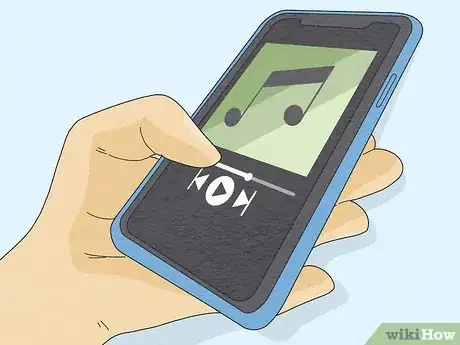
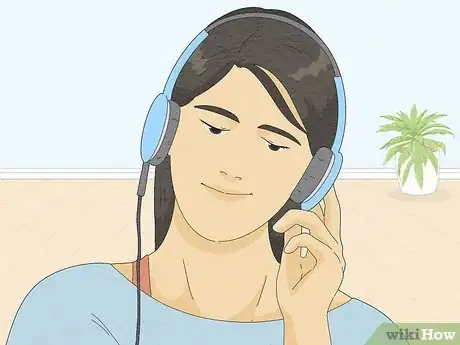


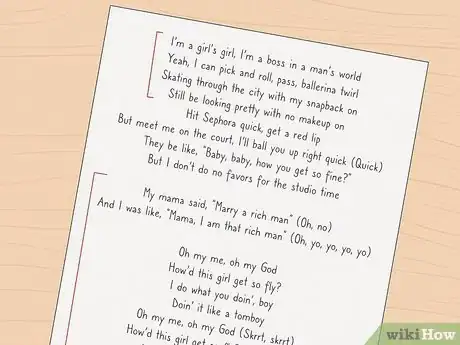
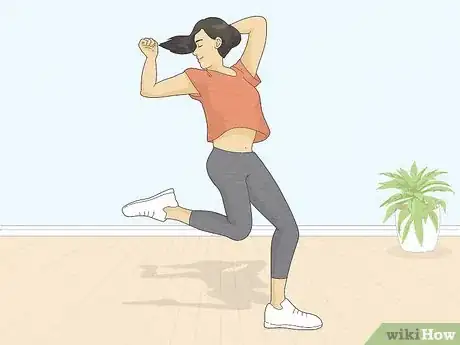
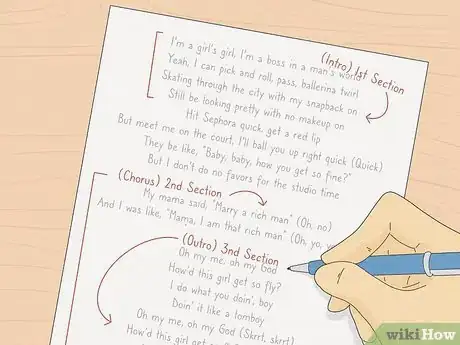
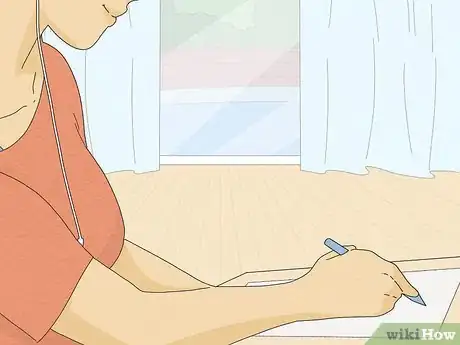

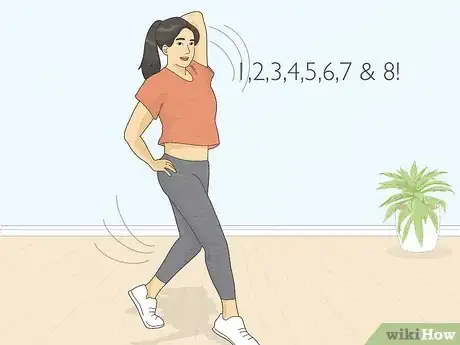
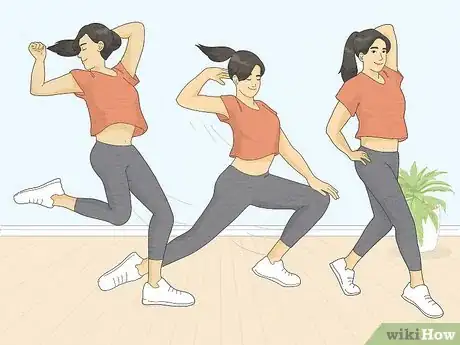
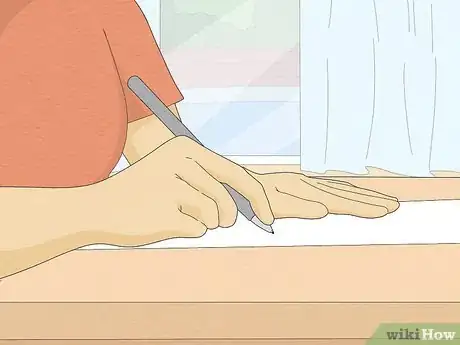
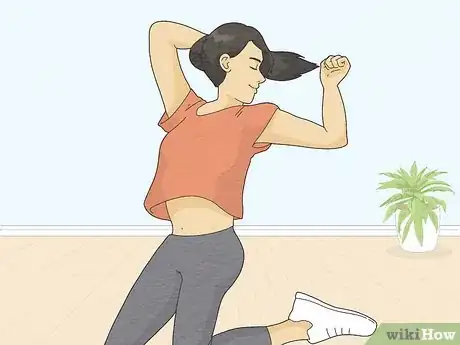
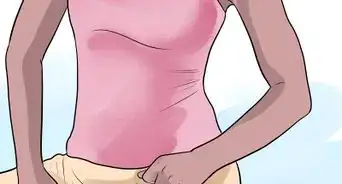
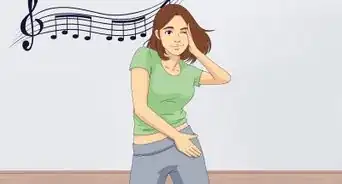

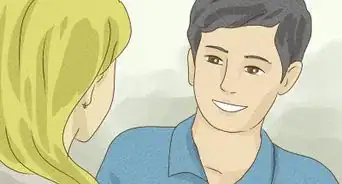

-Step-19-Version-2.webp)
